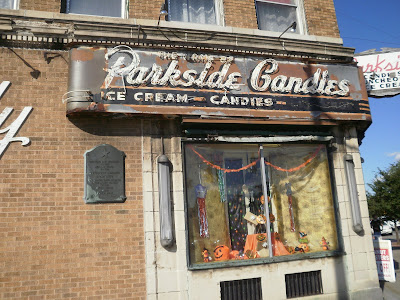Walking from UB's South Campus down Main Street up to Hertel Ave. I noticed several distinct features about the buildings and structures of the surrounding area. The first thing that stood out to me that I had never really paid attention to was the style in which pretty much every store had. They all had an open view or glass windows that you could see what was going on inside or being advertised. For example, the exterior Jim's Steakout reminded me of a classic restaurant in a 50's drive in diner minus the drive in (because its on the sidewalk). Almost all of the establishments give passers by the opportunity to gaze inside and see what's going on inside. Another feature was, most stores appeared if they were once homes before they were businesses. They must have had people living on the first floor at some point and maybe still have people living upstairs in some of these establishments. If I had to guess, I would assume they started out as family businesses and never were rebuilt. In fact that is what gives the stores along Main Street that "retro" feel. There were even two older looking comic book stores, and comic books are like cassette and VHS tapes, very old! Most of the buildings look the same from the time they were probably first built. The buildings feature painted wood that looks like its been painted over once or twice since its been there. This is a huge contrast in comparison to the modern look of UB's south campus. It feels as if you are moving from modern to retro in a matter of a few blocks. One store that was a must to photo was the Parkside Candies Shop. This building looks as if its appearance was deliberately maintained to retain that classic touch. What also jumped out at me while taking a photo of the store was the plaque dedicated to the World War 2 veterans that served from University Heights. I wonder was it really there from 1941. The Chapels along main look as if they have received maintenance from the time they were built, but most of the buildings appear in the original form. Im guessing these buildings were constructed in the 1940's-50's. An indicator that they were built around the same time is the dulling paint on some of the buildings and the similar building structures.






Note the side doors next to the storefronts. If you take a closer look at them, you may be able to tell if they're original to the building. If so, that separate entrance to the second floor apartment was always there. Then there are examples of shopfronts built out into the original front yard to the sidewalk, added on to what were originally just regular houses. Keep looking and you'll see examples of these.
ReplyDeleteAnd if you want to date buildings, lots of them have the dates right on them--up above. Matt (Buffalo 2010) points out "1920" in his Main Street blog, for example.